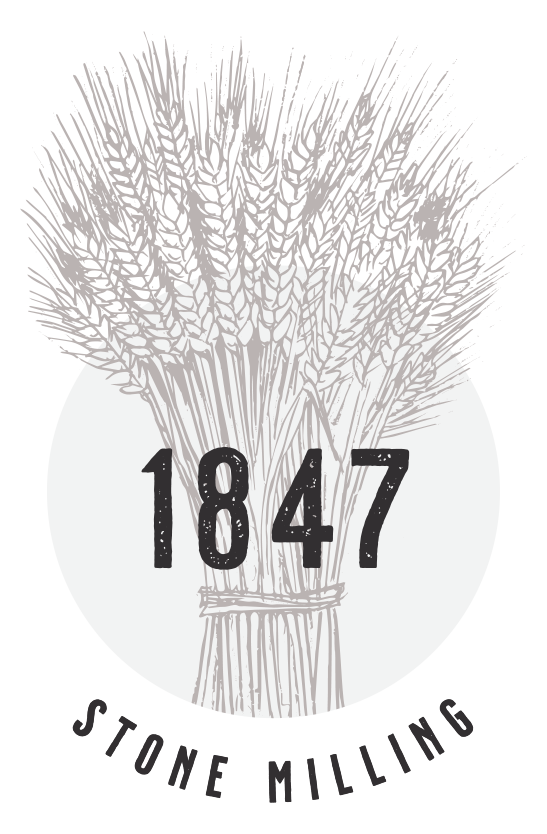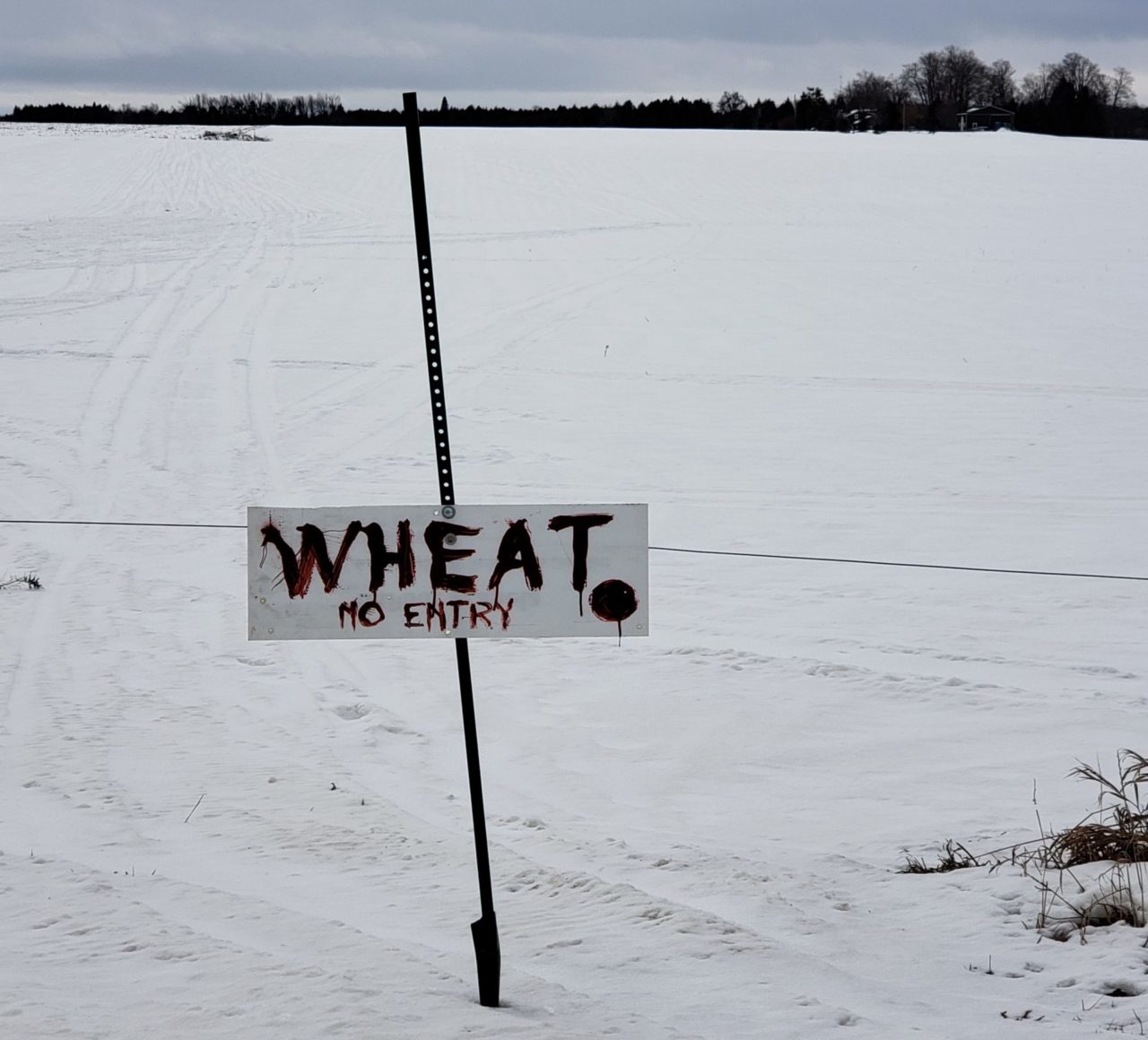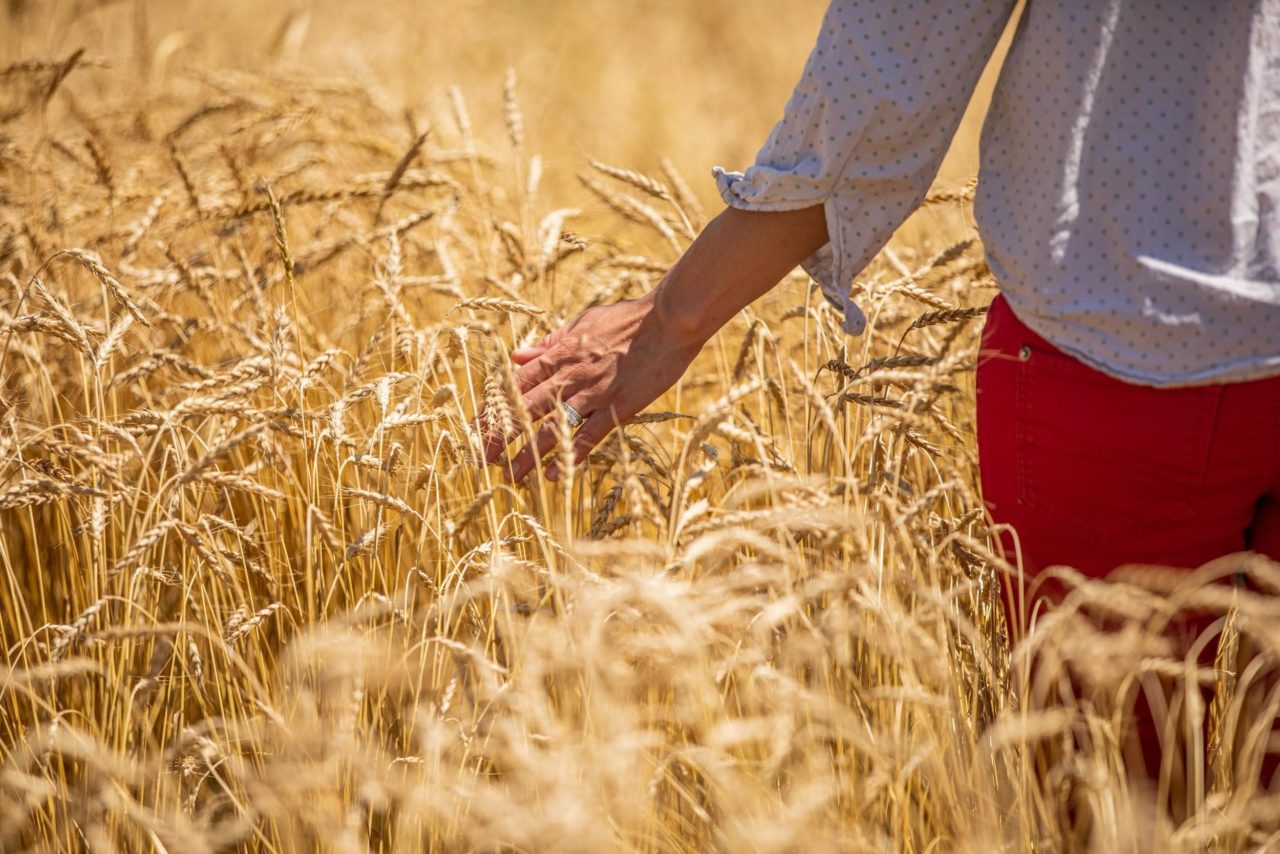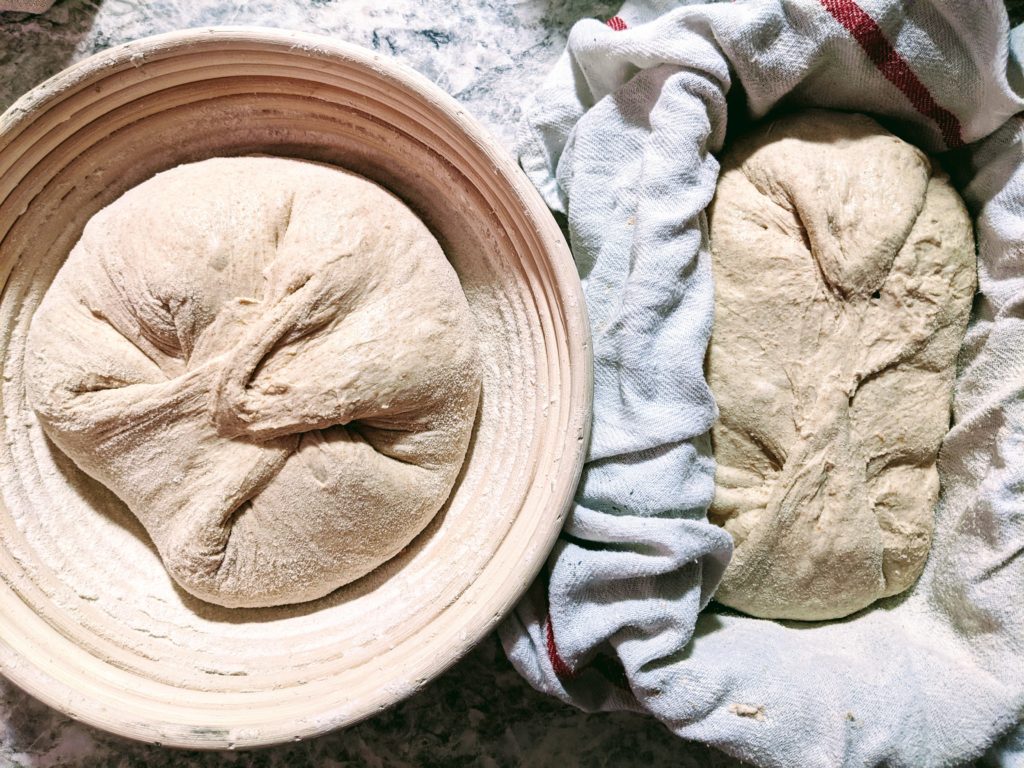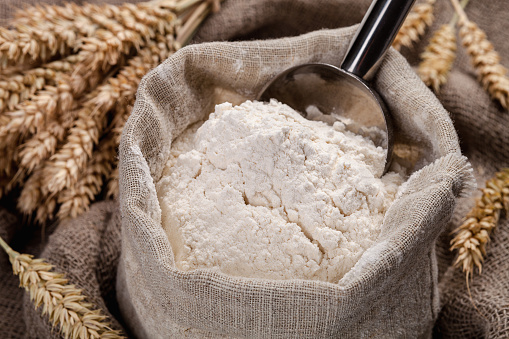Valentine’s Day Special – With each bouquet purchased we are pleased to offer a limited quantity of powder coated garden bird on wheat made by a local artisan. ($35 value)
Spoil your loved one with a bouquet of fresh flours – An assortment of 6 different flours. Daily Grind, Run of the Mill Whole Wheat, Daily Bread, Have Your Cake and Pastry Too, Rye Humour and Red fife!
Choose from two sizes! Click here!
In this month’s update, we have finally brought in our last field of corn. Better late then never! The corn, or any grain, is harvested from the field and travels by gravity wagons or tractor trailers from the field to the grain elevator. There are several different elevators dotted across the country side. Many of them are still family owned and operated. Like the farmers they serve they often work very long hours during harvest seasons.
When the grain arrives to the grain elevator, samples are taken while unloading. All grain is graded by quality. Better grain earns higher prices. The elevators look for how “clean” the grain is. They are looking to see how plump the grains are, the protein of the grain, the moisture content in the grains and most importantly to see if the grains have biological contaminants ( Fusarium or DON ). All of these are analyzed and the load is given a grade… just like at school.
Grain Storage!
Some things you may not have ever noticed. When you are driving through the country you will see different types of storage for the various Canadian grown crops.
Silos are typically used for high moisture grains and silage type material (not used for dry grains like the ones for milling flour). They are falling out of favour to pack systems which are basically bunkers that are covered with plastic once the material is “packed in” using tractors. The material ferments in anaerobic conditions and makes it easy for farm animals to digest.
Corrugated bins are the metal ribbed bins normally large diameter and silver coloured (galvanized). They are the most economical of grain bins and are seen predominantly in the countryside. They hold dry material like our grains! The bins are fabricated using fasteners and are not completely air tight. Since fasteners are used to build them onsite they can be almost any size! These tend to be the large grain bins found at elevators (the grain distribution hub)
Smooth walled bins are the bins we use at 1847 Stone Milling. These bins are welded and completely airtight preventing moisture, air or little critters from finding their way into the grain. They are more expensive than the corrugated bins because of the welding. However, the completely sealed nature of the bins make the expense worth the investment. Since they are a welded bin their diameter is limited to smaller volumes which can be trucked down the road (12 foot diameter normally the limit).
On a festive note.
We took the family on a drive to see the Rockwood Parade of Lights – a tractor Christmas parade! Check out this grain wagon being filled with Christmas cheer! We hope you all have a safe and happy holiday!
Farm Update – November 2020
This is the time of year farmers have put manure or compost on the fields. Getting this organic material on the fields and integrated into the soil allows for microbes to break down the nutrients and deposit them in the soil where our beautiful crops need them! By spreading in the fall it reduces the soil compaction as opposed to spreading in the early spring. There is a fine balance of spreading valuable nutrients at the best time and damage to the land/topsoil.
Another aspect farmers have to take into account is the future weather. If you spread right before a large rainstorm event or a large snow melt the nutrients can run off the field. Not only are the nutrients lost from the field but they also could get into the streams and waterways. No farmer ever wants to see this happen!
Farmers are always considering their tank storage conditions and prefer to have empty manure storage tanks going into the winter to accept new material during winter months. This is not only good practice, but advised by agronomists. For example, any new barn that houses animals needs to have a Nutrient Management Strategy approved by the Provincial Ministry of Food and Agriculture and on average 240 days of manure storage. The 240 days allows for storage of manure during long, cold snow-covered conditions when field application is impossible.
From the Farm
Let’s see what our farmers are up to!
The harvest is in for 2020! Well, currently 98% is harvested, left in the field may be corn and soy. It’s been a great year for most crops including cereals. The warm weather combined with the perfect amount of rain spread apart made for excellent growing conditions. This year’s average rainfall was 360mm*, 18mm lower than last year. These conditions produced an average hard red falling number of 419 seconds and an average protein of 14.1% for the province! The falling number is a measure of the enzymatic activity in the grain with any value over 350 seconds indicating exceptional flour quality. These are conventional grain numbers but organic grains will produce fairly similar results.
*Source
Our Owner, Melissa, featured in a Food Focus Podcast!
Flour Power – Life as a Micro Miller
“Flour has never been cooler. Temporary shortages coupled with a surge in baking as people are staying at home during the COVID-19 pandemic has brought flour into the mainstream. In this episode, Mike talks to Melissa McKeown who runs 1847 Stone Milling, a micro miller in southwestern Ontario. They talk about starting and running a small farm-based food business, competing against the giants, and some of the challenges such as rural internet access. They also talk about different kinds of flour and what makes a good flour.”
Photo Contest!!!!
For the month of December, we will be running a photo contest where we want to see what you are baking this holiday season with 1847 flours!
Winner will be announced in the New Year and will receive a bouquet of flours!
How to participate:
1. Post your best baking shot on social media
2. Tag @1847Flours and #1847Holiday
3. Bonus – share the recipe so others can try!
No limit on the number of entries!
Must live in Canada to win
Contest closes on December 31, 2019 at 11:59pm EST
Please note that if your social media account is private we may not be able to see your posts.
Happy Holiday Baking!!!
From Grain to Glass – Spirt of York
“When you can’t find what you’re looking for, sometimes it’s best to do it yourself. That’s exactly what Melissa McKeown did when her and her brother started @1847flours (Fergus, ON) back in 2014.”
Get it at Spirit of York
What Is Fresh Flour (And How To Use It)
“Fresh-milled flour from a stone mill is just like fresh-cracked pepper. It has more flavour to it,” says Melissa McKeown, who owns 1847 Stone Milling in Fergus, Ontario. Think of it as flour milled the old-fashioned way. The process grinds the entire grain (including the oil-and-nutrient-filled germ and bran), which some say makes stone-milled flour more nutritious compared to the commercially produced stuff (which is ground into flour after the hard bran and germ is removed).”
